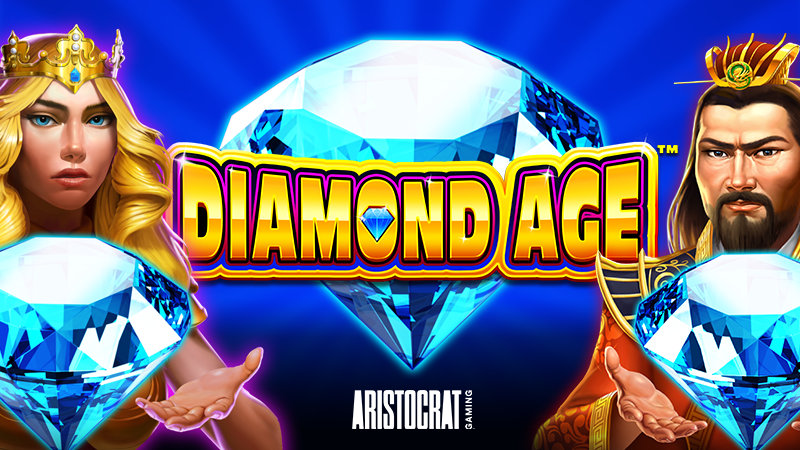GLOBAL GAMING EXPO HIGHLIGHTS (G2E) 2018 LAS VEGAS
The largest annual gathering of global, commercial and tribal gaming professionals in the world took place last week (8-11 Oct) at G2E in Las Vegas. For those who couldn’t make it, here are a few snippets from the educational seminars and sessions that are relevant to the Australia market.
BABY BOOMERS STILL BIG FOCUS FOR SLOT MAKERS – PATIENCE NEEDED FOR MILLENNIALS
When it comes to luring millennials to casinos to gamble, a panel of game and slot manufacturers said that patience is needed to let them mature and that there are still great opportunities to be had with baby boomers.
“The focus has been heavy on millennials when the baby boomer generation is our core consumer today, and that is not going to change anytime soon,” said Siobhan Lane, senior vice president of marketing and gaming operations for Aristocrat. “(Baby boomers) represent 33 percent of the population but 70 percent of the discretionary spending. That is huge, and life expectancy is lengthening, not shortening. The broader question is how we cultivate new players, whether they are part of the millennial generation, Gen X or baby boomers.”
The industry needs to look inside those generational segments, Lane said. Female baby boomers live on average five years longer than males, and their income is growing at a much faster rate as the income gap narrows.
Cathryn Lai, vice president of products and strategy for Scientific Games, said millennials have been a hot topic for the last four or five years, but they should currently be looked at as incremental revenue and not in the same sense as traditional slot customers. Millennials might bring in less revenue but might otherwise have never played before.
Understanding how we measure the success of engaging this new demographic is important because a lot of these skill-based games will never perform as well as the mass-model type games,” Lai said.
Julia Boguslawski, executive vice president of investor relations and chief marketing officer for AGS, said it’s important to note that tastes evolve over time.
She pointed out the need for better communication and a greater focus on marketing to the right places.
“We need to be mindful of cabinet design and how we market to them, but a great game is a great game and that has resonated throughout generations,” Boguslawski said. “A lot of times it is about the generation getting a little older and having the income. We do think a little too much emphasis has been put on millennials. They will come around, as (other) generations have, but we still need to be sure that we are leveraging technology. For example, if you want people to sit at a slot machine for a while “they need to be able to charge their phones.”
EVALUATING GAMING V NON-GAMING GUEST SPEND
Whilst clubs via their membership base have long been integrating customer spend across their operations, casinos executives in the US are still trying to figure out how best to capture non-gaming spend?
The issue, as the panellists at this G2E session laid it out, is this: gaming spend is down and it is forcing major changes in how casinos operate.
For the past few years, the blame for this decline has been laid at the foot of younger players. But most of the panellists now see it differently. “It’s not the millennials’ fault it increased costs and “fees upon fees,” more than generational shifts, has “guided customers away” from previously popular gaming and non-gaming options.
What once were afterthoughts or loss leaders – entertainment and hotel rooms in particular – are now revenue centres, and they’re now getting the information technology support once only afforded gaming.
They are also finding out that the transition to a non-gaming dominated casino resort isn’t all bad news. Rooms and restaurants may not have margins as high as slot machines, but they are still generating revenue. The challenge is how to better cater to guests who shop, dine, and see shows but never drop a dime in the casino. For over 30 years, loyalty marketing in the US has been based almost exclusively on gaming spend. Casinos might have detailed data on the theoreticals of slot players, but no real knowledge of how convention guests buying hundreds of dollars’ worth of meals and entertainment behaved.
US casinos are only now looking at developing loyalty programs that would track the theoretical worth of non-gaming and gaming customers, thereby arriving at the “real worth” of the people who walk through the doors of a casino. Because even though revenues are down for many casinos, foot traffic is the same.
The panel also spoke about the need to avoid the temptation of tightening up casino odds to shore up the bottom line.
“The guest has a gaming budget and we want to keep it in gaming,” said Kevin Zenishek Exec Director Casino Operations for Spokane’s Northern Quest Resort and Casino. Worse odds and higher fees might shift behaviour. Instead of gambling $500 and getting a comped meal, a guest might gamble $100 and spend $400 on everything else. Money is money, but with gaming having a higher margin than other departments, in the long term, Zenishek said, it’s beneficial to drive that money towards the casino floor.
So while casinos will likely be investing mightily in tracking and rewarding their non-gaming spenders, they would do well to not neglect their bread and butter: the gamblers.
LIVE MUSIC DRIVING LAS VEGAS VISITS
For Jason Gastwirth, the president of entertainment for Caesars Entertainment, the strategy of hosting big-name performers at their venues has been a game changer in Las Vegas, giving properties greater exposure on social media and helping to bring in new visitors.
“Five years ago, people thought that the Britney Spears residency was a big bet,” Gastwirth said. “Part of that was the acquisition of the theatre at Planet Hollywood. It was a sizable investment for us, but it turned ultimately to grow our business and the city as a destination.”
That’s evidenced in research from the Las Vegas Convention and Visitors Authority, which now shows live entertainment as the No. 1 reason people visit Las Vegas. That has changed over time as non-gaming amenities become more important, and the visitor profile has gotten younger as a result.
Caesars now has 50 venues around the country, including nine hotels in Las Vegas with multiple performance venues at each.
Spears’ final show earned US$1.14 million in gross revenue, the highest in the city’s history for any residency, according to Caesars Entertainment. Higher ticket sales lead to more gaming and restaurant visits by guests, and Spears’ residency generated more than 30 billion social media impressions.
“We have seen that with a residency we are able to generate billions of media impressions, and that translates to elevating our brand, driving traffic to our website and making sure we are on top of mind of the artist’s reach,” Gastwirth said. “It’s an important part of our strategy.”
Caesars has even gone beyond traditional live entertainment offerings with its High Roller observation tower. It’s opening a zip line over the LINQ Promenade later this year, and in March announced Kind Heaven, a $100 million Southeast Asian-themed attraction, also at the LINQ Promenade, that not only includes live music but restaurants and retail. Kind Heaven is slated to open sometime in 2019.
“We think (both shows and ongoing programs) are key drivers for capturing our share of visitor traffic,” Gastwirth said.
SHARK TANK AT G2E
An interesting innovation at this years G2E was the ability for people to do a live pitch for a casino/hospitality product or service at three of the celebrity judges for the US series of Shark Tank.
The unlikely winner with a 2-to-1 vote was for a product called the DoorPRO, from Vegas Doorstop and company founder/CEO Bill Hengler which won the US$10,000 first prize and a booth at next year’s G2E.
The DoorPRO helps prop open hotel room doors using an ergonomically correct solution, so bellmen can deliver bags or housekeeping can clean rooms. It has already been sold to universities, Walt Disney Hotels, and military bases.
“The money will go toward the next generation of the product,” said Hengler, who was a bellman on the Las Vegas Strip when he came up with the idea for the device in the late 2000s.
Since 2010, he has sold more than 200,000 units to the hotel industry, including several Strip resorts, at an average price of US$8 a pair – or US$1.6 million in revenue.
One of the Sharks said “Honestly, I first thought this product was a piece of s**t. But scratch that. I love sales, and this guy has revenue.”
NEW MAD MAX FROM ARISTOCRAT
A little bit of Australia took centre stage at G2E when Aristocrat debuted its new poker machine Mad Max: Fury Road at G2E.
Aristocrat, in partnership with Warner Bros Consumer Products, launched the game by bringing Max’s V8 Interceptor car to the show. Attendees could sit behind the wheel and get a high-octane, 180-degree photo. They could also wander the heavily themed Wasteland Lounge, decorated with incredible visual effects and costumes from the film. The game will appear on Aristocrat’s new Edge X cabinet, with dual 43ins landscape curved LCDs displaying panoramic views and stereo surround sound. The game will feature characters from the film, including Mad Max, Imperator Furiosa, Immortan Joe, Nux and more.











